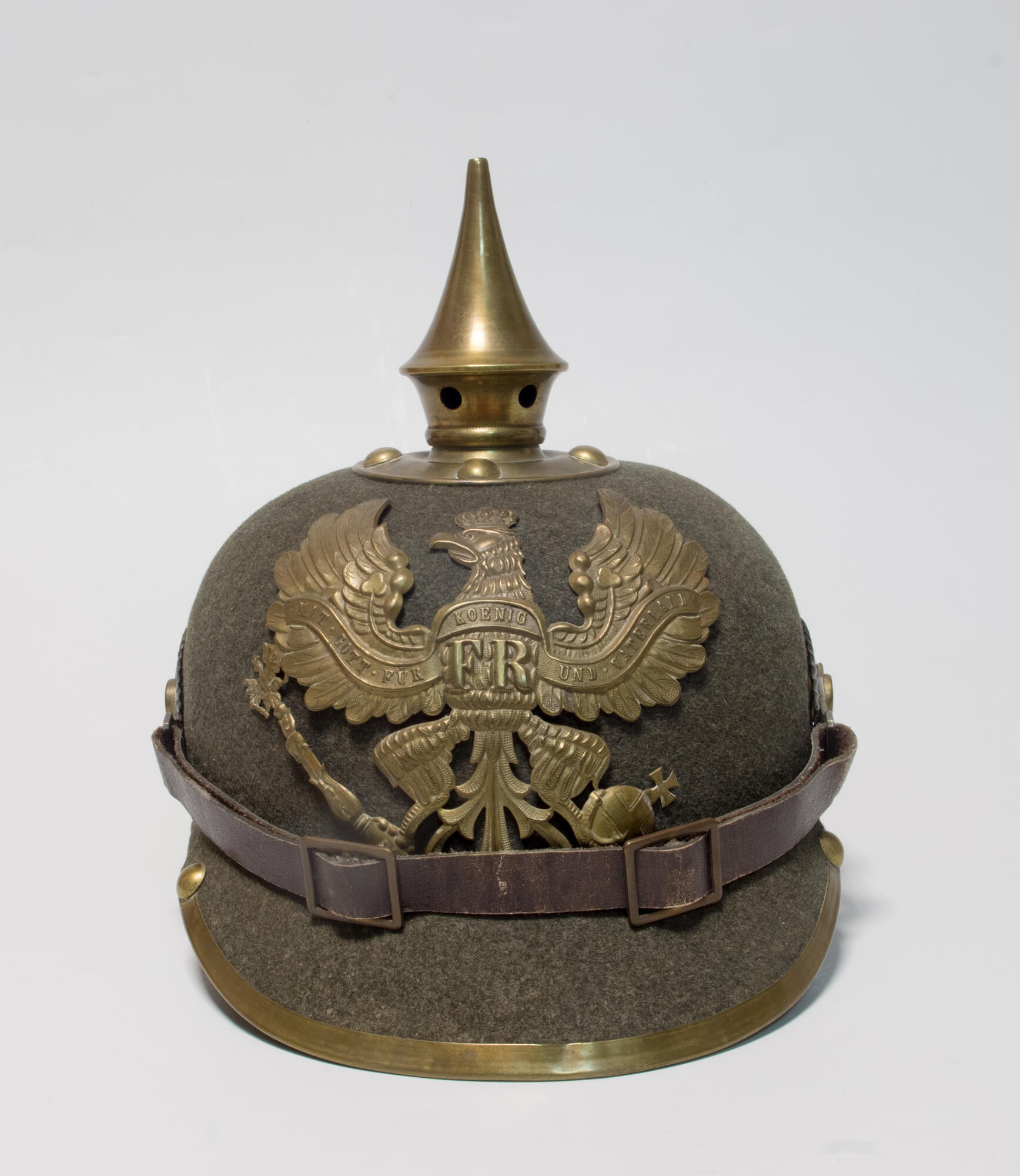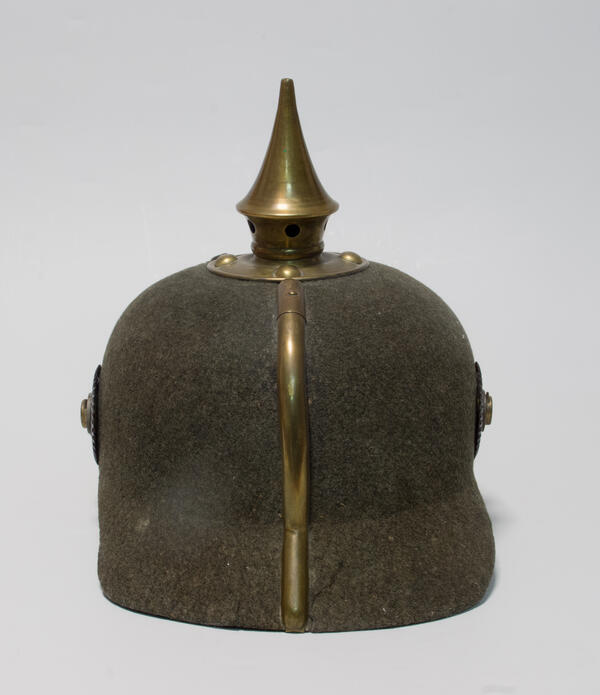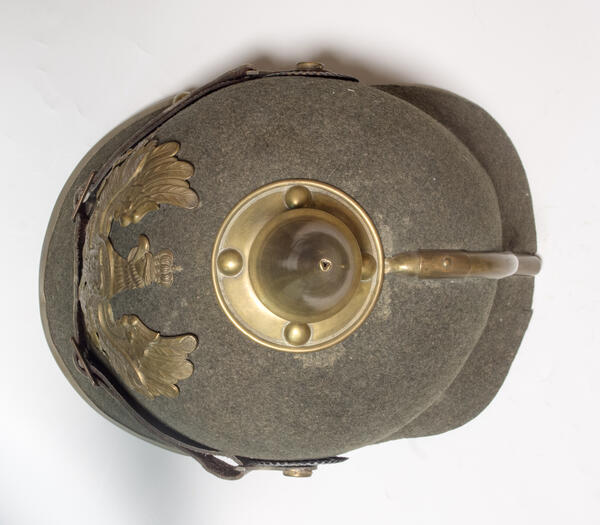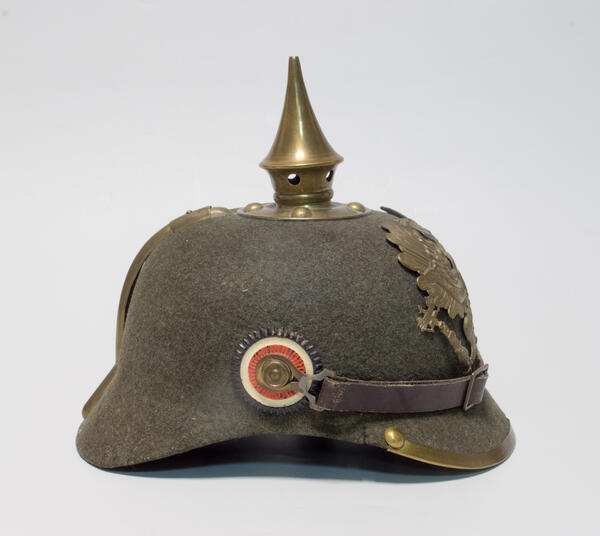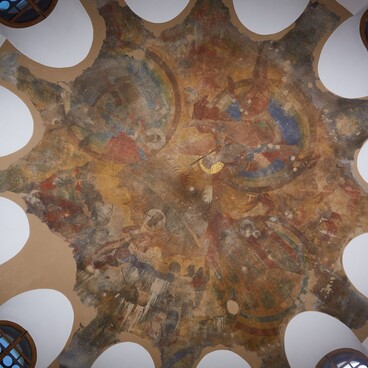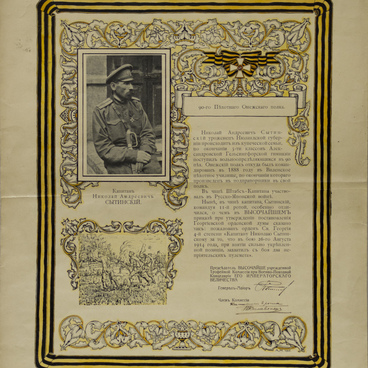The German helmet Pickelhaube (or Pickelhelm, literally — “a helmet with a spike”) was first introduced in the Prussian army by King Frederick William IV in 1842. Similar helmets were subsequently adopted in the Russian Empire in 1844, as well as in Great Britain and other countries.
A distinctive feature of the helmet was the “spike” which was attached to the top of the helmet. Instead of a spike, the Russian version had a pointed ornament in the shape of a flaming grenade. By the beginning of World War I, helmets were made of black leather and differed in various military units by the color of the metal, finial type, cockades and chin straps.
The peacetime helmet of the Prussian line infantry regiments (model of 1895) consisted of a black leather cap with front and rear peaks sewn to it, a leather chin strap with buckles for adjusting the length and loops for attaching to the cap, a cockade of national colors (attached on the left under the chin strap) and a cockade of imperial colors (white, black and red, fixed on the right in the same manner), a coat of arms, a metal trim of the front peak and an overlay on the back of the helmet, rivets, a liner and a finial — the “spike”.
The ‘regimental metal’ color was yellow. The finial was hollow and had a functional purpose, as ventilation holes were made in it. It featured the Prussian coat of arms — a single-headed eagle with a royal crown, with the inscription on the ribbon in German “Mit Gott für König und Vaterland” (“With God for the King and the Fatherland”) and the initials of the first Prussian king Frederick I — FR (Fridericus Rex) — on the eagle’s chest.
Shortly after World War I began, there was a shortage of leather and non-ferrous metals, and the German military department had to look for substitutes for these materials. Between September 1914 and January 1915, felt of a grayish-green color (feldgrau — “field gray”) began to be used as a material for the cap and peaks of helmets. The helmets were pressed from a single sheet of metal.
From January 1915, steel or sheet iron was used as
corps metal, and from May 1915 — galvanized sheet iron. The fittings were
covered with matte gray paint. A felt helmet of this design is presented in the
exhibition. It already has iron fittings and the coat of arms, which means that
it was produced in the beginning of 1915. Judging by the cockade, the helmet
belonged to a private or a non-commissioned officer.
